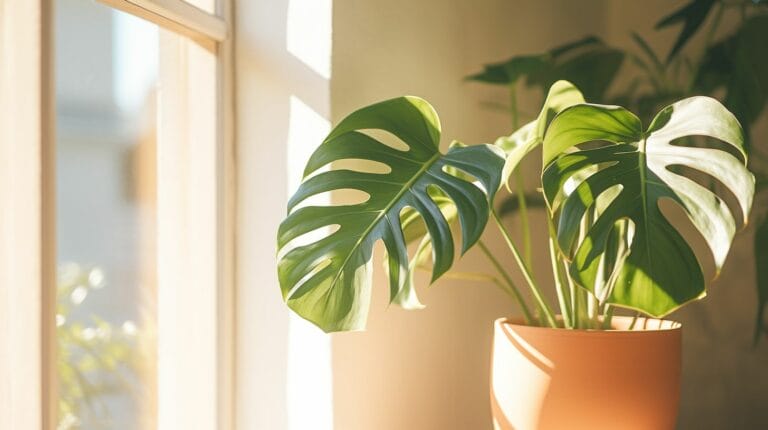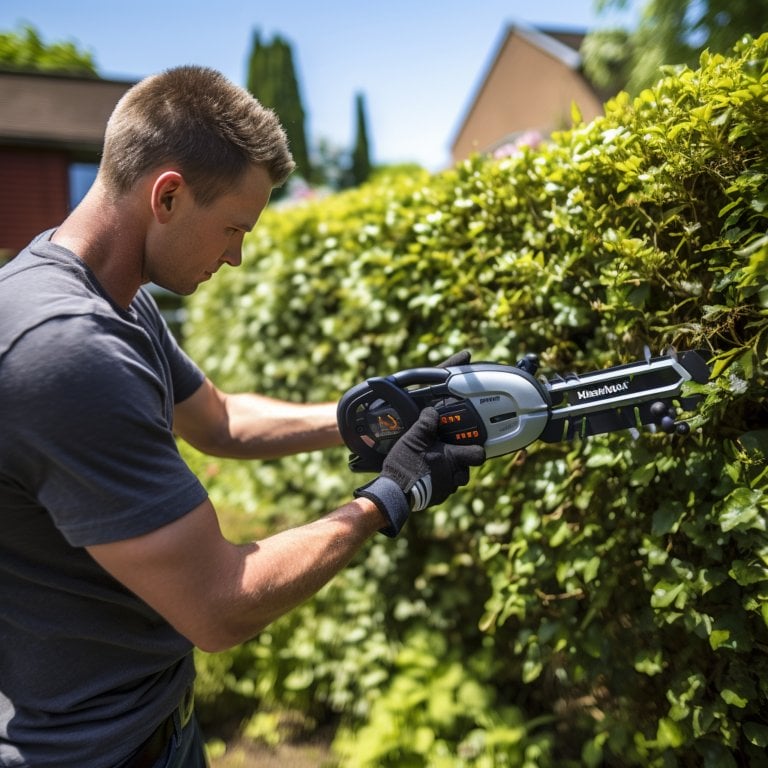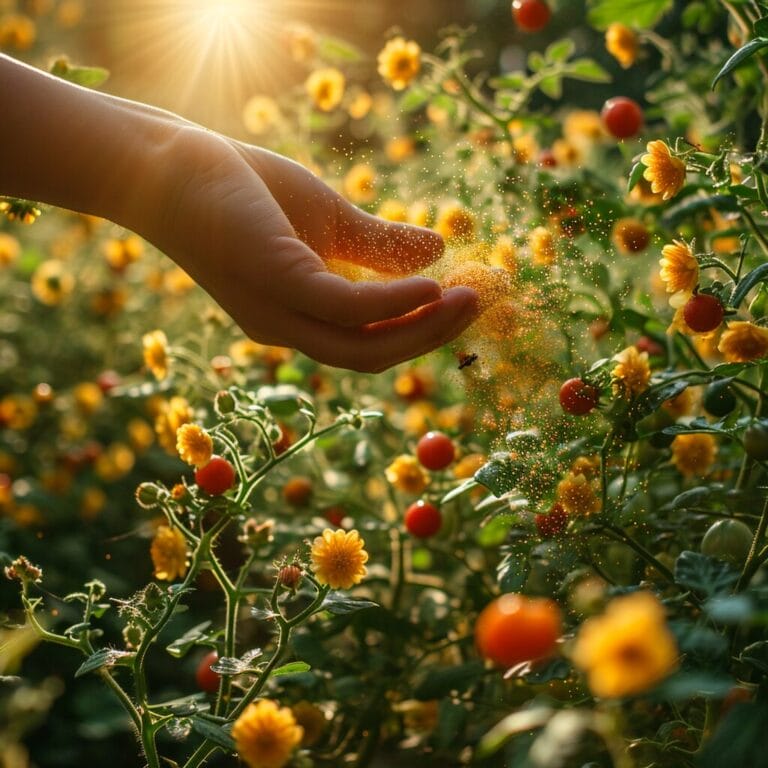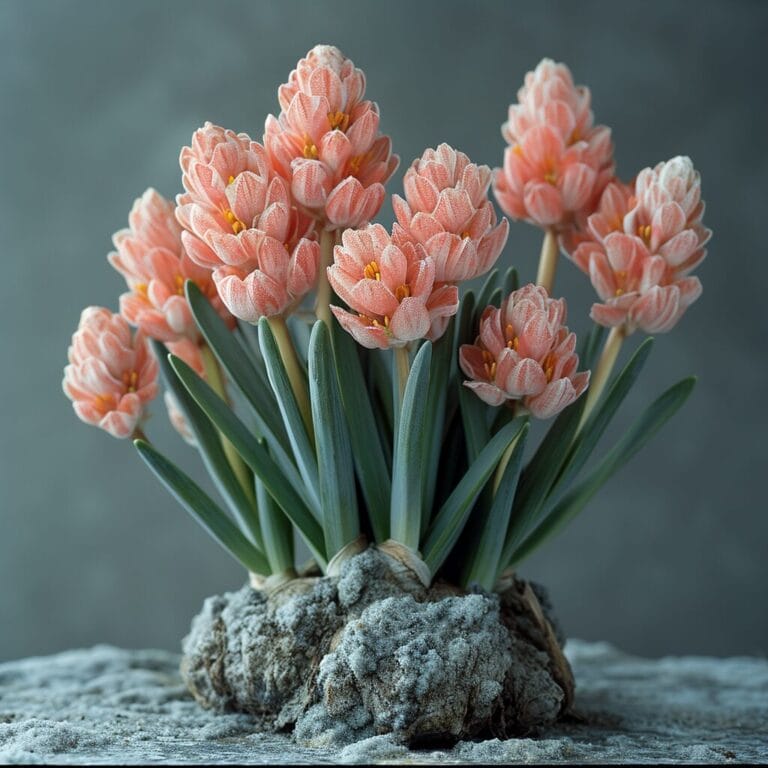Where Do Acai Berries Grow: A Guide to Growing Acai Palm Trees
Join me on an insightful journey as we explore the origin of acai berries and their native environments. Let’s investigate the plentiful supply of these nutrient-dense berries, their cultivation practices, and the fascinating route they traverse from tree to your dining table.
We’re not just tracing their physical path but also their ascent to global superfood status. Let’s explore their incredible health benefits and why they’ve become an integral part of our diets.
Ready? Let’s get started!
Key Takeaways
- Acai berries originate from the Amazon Rainforest and are native to South America, particularly Brazil.
- Acai palms grow in the estuary region of the Amazon where the river meets the sea, in floodplain areas with alluvial soil.
- Acai palms require a tropical environment with sunlight, rainfall, and good soil quality for healthy growth.
- Acai berries are also successfully cultivated in regions beyond the Amazon, such as southern parts of the United States, certain parts of Asia, and African countries.
Tracing the Origins – Acai Berries and Their Natural Habitat
Let’s start by tracing the acai berry back to its roots in the Amazon jungle.
It’s essential to understand the unique features of the acai palm’s natural ecosystem to comprehend why it thrives there.
Then, we’ll explore other areas of the world where acai berries have been successfully introduced and are now growing.
Historical Connections between Açaí and the Amazon Rainforest
I will delve into the rich history of acai berries, tracing their origins back to their natural habitat in the Amazon. The acai berries grow on the Euterpe Oleracea, a palm tree species native to this region. The historical relations of acai with the Amazon is deeply rooted, with local tribes relying on it for centuries.
To paint a better picture, let’s consider this table:
| Historical Period | Event | Impact |
| Pre-Columbian Era | Native tribes discover acai berries | Acai becomes a staple food |
| 16th Century | Europeans discovered the Amazon Rainforest | Acai’s health benefits reach the Western world |
| 20th Century | Commercial harvesting begins | Acai berries gain global popularity |
| Present Day | Acai tending expands | Protects the rainforest and supports local communities |
These key events underline the profound connection between acai berries and the Amazon Jungles.
The Unique Features of Acai Palm’s Natural Ecosystem
In understanding the acai palm’s natural ecosystem, it’s crucial to note the unique features that have allowed it to thrive in the Amazon Forests.
The acai palm tree is a resilient species that has adapted to grow in the floodplain areas of the Amazon, which are marked by seasonal floods. Acai palms grow predominantly in the estuary region, where the river meets the sea, and this area’s rich, alluvial soil offers the tree ample nourishment.
Moreover, these palms are also found in subtropical climates, signifying their adaptability. Understanding this natural habitat of the acai palm tree gives us insight into the interplay between the environment and the growth of this nutrient-rich fruit.
Geographic Distribution of Acai Berry Cultivation
Where else, you might wonder, have acai berries found a home outside of their original Amazonian habitat? Due to the growing popularity of acai berries, countries with similar climate conditions have started cultivating the acai tree. Let’s explore some of these global regions:
- The United States, specifically in the southern parts of Florida and California, where the acai berry seeds have successfully germinated.
- Certain parts of Asia, primarily Thailand, and Vietnam, have also started cultivating acai berries due to their tropical climate.
- In Africa, countries like Ghana and Nigeria have started growing acai trees because of their hot and humid climate.
These regions have successfully replicated the Amazonian environment, providing a new home for acai berries.
Cultivating the Mighty Berry – How to Grow Acai Palms
Now, let’s focus on how you can cultivate these powerful berries yourself.
We’ll start by exploring the lifecycle of an acai palm, from seed to maturity.
Then, we’ll discuss the key factors for healthy growth and the potential challenges you might face.
Lifecycle of the Açaí Palm: From Seedling to Maturity
I’ll delve into the fascinating transformation journey that an acai seed undergoes to become a mature palm. It’s a process that requires patience and care, but the reward is a tree that’s an important part of many ecosystems.
To grow acai berries from seed, you should understand the acai tree’s lifecycle:
- The seed germinates, usually in the dark, damp soil of the rainforest.
- The young palm sprouts palm leaves, reaching for the sunlight.
- After several years, the palm matures and produces acai berries.
Remember that cultivating acai berries is a long-term commitment. However, watching a seed grow into a fruitful palm is an incredible experience.
Essential Elements for the Successful Cultivation of Acai Palms
In cultivating the mighty acai palm, it’s essential to understand that both the quality of the soil and the climate play crucial roles, and without the right balance, your chances of a fruitful reap diminish. Acai palms grow best in a tropical environment with plenty of sunlight and rainfall. They’re not picky about soil, often thriving in soilless conditions, but they do appreciate some organic matter and good drainage.
For healthy acai palm tillage, frequent fertilization is key. When you’re growing acai berries at home, integrate compost or a balanced, slow-release fertilizer into the soil. Remember, though, that too much fertilizer can burn the roots.
Lastly, be patient. Acai palms take time to grow and bear fruit, but your efforts will be rewarded with a bounty of antioxidant-rich berries.
Challenges and Concerns in Cultivating Acai Palms
While it’s true that acai palms can thrive in a variety of conditions, growing them isn’t without its challenges and concerns, particularly in non-tropical environments. If you’re keen to learn how to grow acai, be prepared to face a few obstacles.
The first challenge in the tending process is needing a controlled, humid environment. Often, this necessitates using a greenhouse, which can be costly.
Second, acai palms can be selective about transplanting. This process requires careful handling to avoid damaging the root system.
Lastly, acai palms are susceptible to certain pests and diseases, demanding vigilant monitoring and prevention measures.
These challenges and concerns in growing acai palms can be daunting, but with patience and proper care, cultivating your very own ‘Mighty Berry’ is possible.
The Road to Harvest – Time and Techniques
Now, let’s move on to the fascinating journey from planting to reaping acai berries.
We’ll start by looking at how long it takes for these berries to grow from seed to harvestable fruit.
Then, we’ll examine the traditional methods used for reaping and how farming technology has transformed this process over time.
Growth Timeline for Acai Berries from Seed to Harvest
So, how long does it actually take to grow acai berries from seeds? Growing acai berries from seeds to reaping time takes patience.
After sowing, the germination period can take anywhere from 30 to 40 days. The seedling stage follows and can last for about a year. Once the plant matures, reap time typically begins at about 3 to 4 years.
To successfully grow acai berries, consider these factors:
- Acai berries contain high antioxidant levels that may affect seed germination and growth, so nutrient-rich soil is crucial.
- Adequate light exposure is essential for the seedling stage.
- Regular watering and warm temperatures can also aid in successful growth.
After discovering the fascinating journey of Acai berries from seed to harvest, find out if peonies can bloom in their very first year!
Traditional Methods for Harvesting Açaí Berries
I’m about to delve into the traditional methods of acai berry harvesting, a process steeped in rich culture and time-honored techniques.
Acai berries are small, deep purple fruits growing primarily in the Amazon rainforest, where they’ve been used in traditional medicine for centuries.
Reaping these potent berries is a skill passed down through generations. It begins with identifying the ripe clusters characterized by their deep purple color. The harvesters then skillfully climb the acai palms, often reaching heights of over 60 feet, to carefully cut these clusters down.
Understanding where acai berries grow and how they’re reaped is key to appreciating the labor-intensive process behind every handful of these nutritious berries. This insight takes us closer to mastering the art and science of acai berry reaping.
Evolution of Harvesting Methods in Contemporary Agricultural Technology
Frequently, I’ve marveled at how modern farming technology has revolutionized how we reap acai berries. Still, it’s important to remember that these advancements didn’t happen overnight. The evolution of reap techniques has been a gradual process, driven by the horticulture industry’s need for efficiency and scale.
Here’s a quick snapshot of the journey:
- Traditional methods, where acai berries grow on tall palm trees and require manual labor for reaping.
- The introduction of simple mechanical tools enhances speed and reduces physical strain.
- The adoption of modern farming technology, incorporating advanced machinery and precision agriculture, significantly boosts productivity and sustainability.
It’s fascinating to see how far we’ve come, and I can’t wait to see what the future holds for acai berry farming.
From Tree-to-Table: Acai Berries in the Global Food Chain
Now, let’s turn our attention to how acai berries journey from tree to table within the global food chain.
We’ll first explore how the berry’s limited shelf life impacts its distribution worldwide.
Then, we’ll look at how strategies have been adopted in processing and exporting these berries.
Challenges in Distributing Acai Berries Arising from Their Short Shelf Life
Before we delve into the details, it’s important to understand that the limited shelf life of acai berries significantly impacts their distribution from tree to table. Fresh berries are delicate, with a limited shelf life that makes distribution challenging.
Here are some key points to consider:
- Acai berries start to lose their nutritive value just 24 hours after being gathered, making it crucial to process and freeze them quickly.
- The expensive nature of rapid transport and careful handling means acai berries are often more expensive to buy in markets far from their origin.
- Innovations in storage and distribution techniques are helping. Still, acai berries remain a premium product due to their limited shelf life.
Understanding these factors is fundamental in appreciating the journey of acai berries from tree to table.
Adaptive Strategies in Processing and Exporting Acai Berries
I’ve identified two major strategies in processing and exporting acai berries. Both play essential roles in getting the fruit from the tree to the table.
Understanding where acai berries grow is the first step, as it directly influences these adaptive strategies. The first strategy involves processing the berries swiftly after their reap due to their limited shelf life. They’re promptly cleaned, pulped, and frozen to maintain their nutritive value.
The second strategy is efficient exporting. Given the global demand for acai berries, streamlined export processes are crucial. This includes robust cold storage facilities and speedy transportation to ensure the berries reach global markets quickly.
These adaptive strategies have been pivotal in integrating acai into the global food chain.
Cultivating Acai Palms in Non-native Environments: Feasibility and Approaches
In exploring the acai palm’s potential for cultivation beyond its native habitat, I can’t help but consider the implications this could have for the global food chain. The acai fruit and palm hearts are highly prized, and learning how to grow these trees indoors or in non-native environments may offer huge benefits.
To master this endeavor, consider these aspects:
- Understanding the specific needs of the acai palm, including sunlight, temperature, and humidity requirements.
- Experimenting with indoor and greenhouse cropping techniques.
- Learning the harvesting process to ensure the best quality acai fruit and palm hearts.
Viable cultivation of acai palms beyond their native habitat not only expands the acai market but also creates opportunities for local farmers and global consumers alike.
Nutrient Powerhouse – Health Benefits and Nutritional Importance of Acai Berries
Let’s turn our attention to the nutritive importance of acai berries.
We’ll explore their nutrition profile and understand why they’re labeled as a superfood.
Then, we’ll look at how to incorporate them into our balanced diet for optimal health benefits.
Nutritional Benefits of Acai Berries
I’m about to delve into the nutritive profile of acai berries, bursting with various essential nutrients that make them a true powerhouse for our health. These berries are rich in antioxidants, a key factor contributing to their nutritive benefits.
Acai products, derived from these berries, are renowned for their exceptional nutritive content.
Engage with these key details:
- Acai berries are a major antioxidant source, helping combat harmful free radicals.
- These berries are fiber-rich, promoting healthy digestion and preventing constipation.
- Acai berries are also a potent source of heart-healthy fats, contributing to cardiovascular health.
In essence, acai berries aren’t only about tasting good; they’re about making you feel good, too, thanks to their incredible health-related profile.
Scientific Basis of Acai Berries as a Superfood
Acai berries aren’t just tasty; they’re a nutritional powerhouse. Now, we’ll explore the science that underscores their status as a superfood.
Ah-sigh-ee berries are incredibly nutritious and packed with antioxidants that combat damaging free radicals in our bodies. They’re a good source of fiber, heart-healthy fats, and even plant-based protein. Plus, they contain a range of essential vitamins and minerals, adding to their superfood status.
Their high antioxidant content is particularly noteworthy as it’s linked to numerous health benefits, including improved brain function and reduced risk of chronic diseases. The science supports it: The ah-sigh-ee berry isn’t merely a delicious treat; it’s a weapon in our nutritional arsenal, defending our bodies from damage and disease.
Integrating Acai Berries into a Well-Rounded Diet for Maximum Health Advantages
Although they’re native to the Amazon jungles, I’ve found that integrating acai berries into my everyday diet, no matter where I live, provides various health benefits. These edible fruits are packed with vital nutrients and fatty acids, similar to the nutritional profiles of other berries. I often blend them into my morning smoothie or a healthy salad, ensuring I harness their organic matter.
Here are three ways you can incorporate them into your diet:
- Blend them into a smoothie for a nutritious breakfast.
- Sprinkle them over your salad for an antioxidant-rich meal.
- Use them as a topping on your oatmeal, adding a delightful crunch.
Frequently Asked Questions
What Are the Different Varieties of Acai Berries?
I haven’t found different varieties of acai berries. They’re typically the same species, Euterpe Oleracea. However, their taste and nutritional value can vary based on soil and climate conditions.
How Much Water Do Acai Palms Require Annually?
I’ve found they’re fairly thirsty plants, needing around 2000-3000 mm of rain annually. They’re not drought-tolerant and require consistent moisture for optimal growth and berry production.
What Is the Process of Turning Acai Berries Into Acai Powder?
Turning acai berries into powder involves several steps. I first harvest the berries and then freeze-dry them. Next, I crush the dried berries into a fine powder. This method retains the fruit’s nutrients and flavor.
Are Acai Berries Used in Traditional Medicine?
Acai berries are used in traditional medicine. They’re known for their antioxidant properties. They are often used to boost immune systems, aid digestion, and improve overall heart health in many indigenous cultures.
Can Acai Berries Be Used in Skincare Products?
Acai berries can be used in skincare products. They’re packed with antioxidants, which help fight aging and inflammation. I’ve seen them in everything from face masks to moisturizers.
Conclusion
So, there you have it! Acai berries naturally grow in the rainforests of South America, notably in Brazil. These tiny powerhouses need a specific climate to thrive, and once they’re ready, they’re harvested and distributed worldwide.
From food to cosmetics, these berries are everywhere. And why not? They’re packed with nutrients and health benefits. Acai berries are truly a gift from nature, and I can’t help but marvel at their journey from tree to table.







